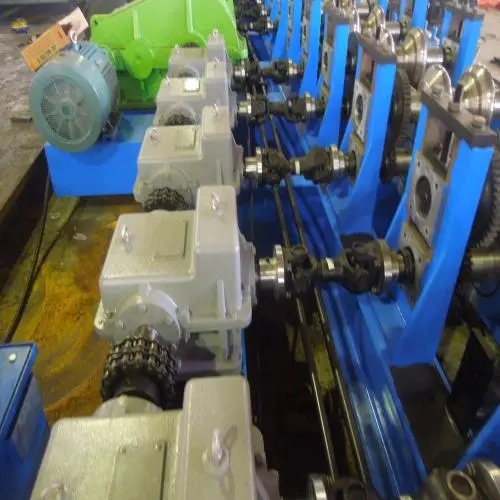
Understanding Steel Slitting Lines A Comprehensive Overview
Steel slitting lines are essential pieces of machinery in the metal processing industry, specifically designed for cutting large coils of steel into narrower strips. This process is crucial for various downstream applications, making slitting lines a significant component in the manufacturing supply chain. In this article, we will explore the working principles, components, and advantages of steel slitting lines, as well as their applications in different industries.
The Working Principle of Steel Slitting Lines
The primary function of a steel slitting line is to take a wide coil of metal, usually stainless steel or carbon steel, and cut it into multiple narrower coils or strips. The process begins with uncoiling the master coil, which is mounted on an uncoiler. As the coil unwinds, the steel passes through several critical components, including slitting knives, guiding systems, and recoilers.
The slitting process employs rotary blades that slice through the material at high speeds. These blades can be adjusted to create varying widths of strips according to specific customer requirements. Precision is crucial; therefore, slitting lines are equipped with sophisticated controls to ensure accurate measurements and consistent strip quality. After the slitting is completed, the narrow strips are recoiled for ease of transportation and further processing.
Key Components of a Steel Slitting Line
Steel slitting lines consist of several key components that work together to ensure efficient operation
1. Uncoiler This device holds and unwinds the master coil of steel. 2. Guiding System Ensures that the steel strip maintains a straight path through the slitting process. 3. Slitting Head Houses the rotary knives that cut the steel into narrower strips. This is the heart of the slitting line and must be maintained to ensure sharp and precise cuts. 4. Tension Control Maintains the correct tension of the steel strip throughout the slitting process, which is vital for preventing defects. 5. Recoiler After slitting, the individual strips are wound onto coils again for storage or shipping.

Advantages of Steel Slitting Lines
The integration of steel slitting lines in manufacturing processes offers numerous advantages
- Customization Manufacturers can produce strips of varying widths to meet specific customer requirements, enhancing flexibility and customer satisfaction. - Efficiency Modern slitting lines are equipped with automation and advanced technology, significantly improving the speed and efficiency of the slitting process. - Quality Precise cutting and tension control ensure that the resulting strips are uniform and meet high-quality standards, reducing waste and the need for rework. - Cost-Effectiveness By optimizing the use of raw materials and minimizing scrap, slitting lines can lower production costs in the long run.
Applications of Steel Slitting Lines
Steel slitting lines are widely used across various industries, thanks to their versatility and efficiency. Some common applications include
- Automotive Industry Steel strips are used in the production of vehicle body components, frames, and interior parts. - Construction Sector Strips are essential in producing metal roofing, siding, and structural components. - Appliance Manufacturing Many home appliances use steel strips for their structural components and casings. - Furniture Industry Steel strips are often utilized in creating sturdy furniture structures and supports.
Conclusion
In summary, steel slitting lines are a vital part of the metal processing industry, enabling manufacturers to produce high-quality steel strips tailored to various applications. As technology advances, the efficiency and capabilities of these lines continue to evolve, further solidifying their importance in modern manufacturing. Understanding the operation and benefits of steel slitting lines is essential for businesses aiming to optimize their production processes and meet the demanding needs of their clients.